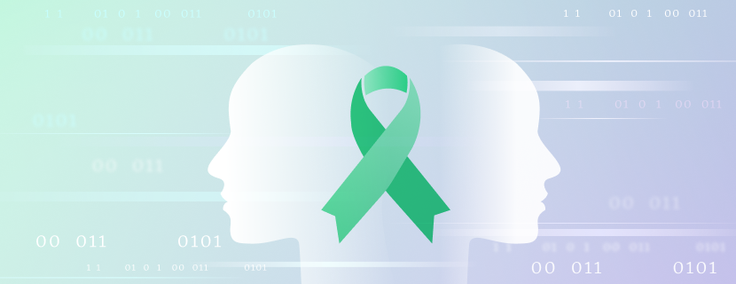
In February, I read a sobering article. Headlined “Teen Girls Report Record Levels of Sadness, C.D.C. Finds,” the piece described the high rates of persistent sadness, depression and suicidal thoughts reported by girls as well as lesbian, gay and bisexual teenagers. The article also pointed to the connection between social media use and negative mental health.
This made me pause. I reflected on the socio economic and political difficulties of the past few years, and the role technology plays in mental health. As a father of four with two teenage daughters, the protector in me wondered how these complex issues could be solved.
In May, we observe Mental Health Awareness Month. I believe this is a key opportunity to encourage understanding and reduce stigma around mental health. In 2021, 57.8 million U.S. adults experienced mental illness. That’s 1 in 5 adults! What can be done to reverse this trend? I have dedicated my life to technological innovation, and believe it is extremely important to explore how technology can damage mental health and how it can be used to instead benefit mental health. We, myself included, must examine ways our industry can make stronger efforts to mitigate the harms and increase the benefits.
Technology has made an immeasurable contribution to our modern lives, transforming everything from transportation to communication to entertainment, and much more. I believe it has also done a lot good for mental health treatment. Digital health services, including telehealth services, have increased access to mental health care, with studies finding similar outcomes for in-person and virtual therapy.
This is a boon for people who live in communities where there are a dearth of local mental health professionals, and for people whose otherwise hectic schedules may not allow them to visit an in-person care center.
Access to telehealth was especially important during the COVID-19 pandemic. A scientific brief released by the World Health Organization found that in the first year of the pandemic, “global prevalence of anxiety and depression increased by a massive 25%”. Similarly, the NYT report I previously referenced also noted the negative impact long periods of social isolation had on young people’s mental health during the pandemic. Lockdowns and social distancing, which reduced the spread of the virus, also induced feelings of loneliness.
Technology and social media served as tools to combat that. Who could forget the viral “dance challenges” that kept us active, the television shows that kept us entertained and the many, many hours spent talking with family, friends and colleagues on video chat platforms. In short, it was our tech that kept us connected during one of the darkest times in recent memory – and still keeps us connected to this day.
However, one study noted that while routine social media use can have positive outcomes on social well-being, positive mental health and self-rated health, having an emotional connection to social media is negatively associated with these areas. An emotional connection includes “checking apps excessively out of fear of missing out” and “being disappointed about or feeling disconnected from friends when not logged into social media.” This is only exacerbated by the fact that social media platforms are designed to be addictive for users.
Other phenomena such as cyber-bullying and repeated exposure to unrealistic and unhealthy beauty standards are other ways social media can be toxic. The pandemic also underscored how digitally spread misinformation can take a deadly toll on mental and physical health.
What can be done? I don’t believe the solution is to ban social media or tech innovation. However, we must hold industry leaders accountable to developing solutions to these rampant problems. We cannot allow them to focus solely on the number of users engaging with their platforms while ignoring the social ills that are also developing.
One key solution should be to encourage tech firms to implement features to stop and/or contextualize the spread of misinformation, hateful content and bullying. Companies should partner with mental health professionals to identify the specific ways their platforms can possibly harm mental health and determine ways to mitigate and reverse it. Furthermore, tech firms should be aware of bias in their algorithms, especially on the basis of sex and race.
Similarly, tech firms should focus on improving diversity in their employee base. As I’ve previously discussed, there is a significant gender gap in STEM fields, as well as a lack of racial diversity. A 2019 report noted, “The AI field, which is overwhelmingly white and male, is at risk of replicating or perpetuating historical biases and power imbalances.” If tech is to be used by everyone, tech firms need to ensure that people from all backgrounds are represented in its development.
I am glad to report that we at SingleStore, have taken some steps in accessibility of mental healthcare resources like offering our employees both free therapy and coaching sessions through Modern Health. We also offer mindfulness and meditation resources focused on both work and non-work related topics.
Solving complex problems surrounding mental health will not happen overnight. Yet I do believe that with determination and prioritization, we can achieve great improvements from where we are today, to ultimately save lives and ensure positive outcomes for all.
If you or a loved one would like to access mental health resources, visit https://mhanational.org/get-involved/contact-us.





